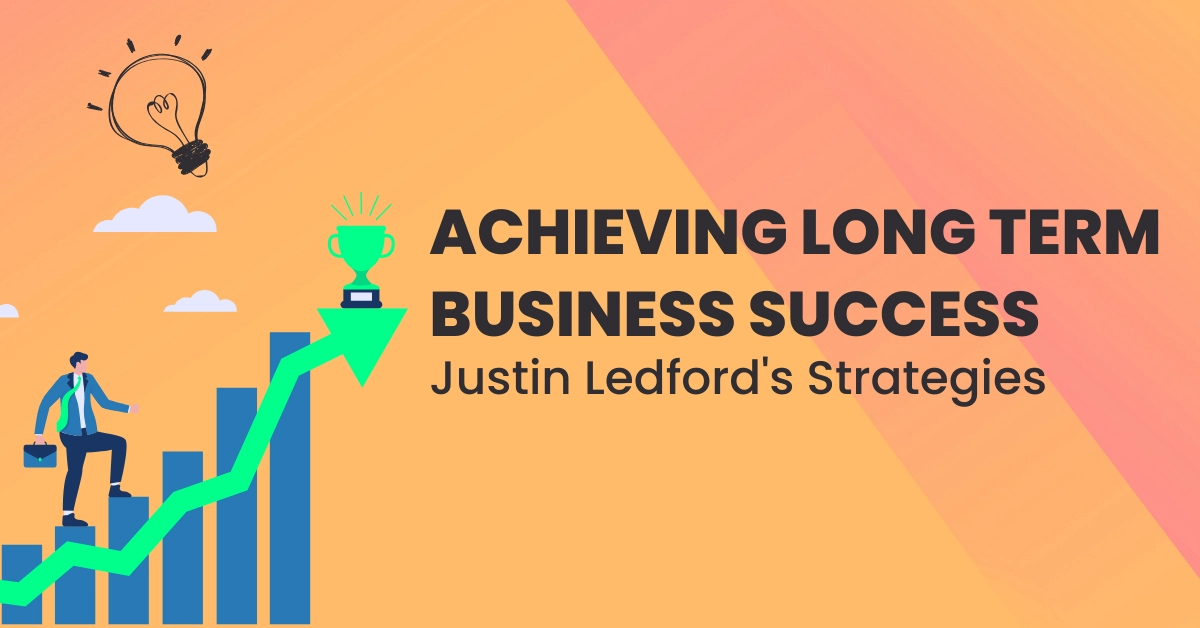Lorem ipsum dolor sit amet, consectetur adipiscing elit. Ut elit tellus, luctus nec ullamcorper mattis, pulvinar dapibus leo.
In the world of business, the pursuit of sustainability and profitability has often been viewed as a delicate balancing act. As Justin Ledford, I have made it a mission to not only navigate this equilibrium but to excel in it. In this blog, I will share my insights into the art of harmonizing sustainability and profitability within a business context.
Understanding the Significance of Sustainability and Profitability
Before we delve into strategies and approaches, let’s grasp the significance of sustainability and profitability in the modern business landscape. Sustainability goes beyond environmental concerns; it encompasses ethical practices, social responsibility, and the long-term viability of a business.
Profitability, on the other hand, is the lifeblood of any enterprise, allowing it to grow, innovate and thrive.
The Nexus of Sustainability and Profitability
At first glance, sustainability & profitability might seem at odds. The pursuit of higher profits can sometimes be seen as detrimental to sustainable practices. However, this is a misconception. The nexus of sustainability and profitability is where businesses can truly thrive.
Approach 1: Ethical Business Practices
Ethical business practices form the foundation of sustainable and most profitable businesses. Uphold high ethical standards in every aspect of your business, from sourcing materials to labor practices and customer interactions. Ethical conduct not only aligns with societal values but also fosters customer trust and loyalty.
Approach 2: Long-Term Vision
Sustainability & profitability often require a long-term perspective. Instead of prioritizing short-term gains, focus on building a resilient business that can weather economic fluctuations and industry changes. This approach may involve making initial investments in sustainable practices that pay off over time.
Approach 3: Innovation and Efficiency
Innovation can drive both sustainability and profitability. Explore innovative ways to reduce waste, lower energy consumption, and streamline operations. Not only does this benefit the environment, but it also reduces costs, ultimately boosting profitability.
Approach 4: Customer-Centricity
A customer-centric approach is a cornerstone of sustainable profitability. Listen to your customers and align your products and services with their values and needs. Satisfied customers are more likely to remain loyal and refer others, driving long-term profitability.
Approach 5: Resource Management
Effective resource management is essential for sustainability & profitability. Analyze your resource consumption, whether it’s raw materials, energy, or labor. Identify areas where you can optimize resource usage to reduce costs while minimizing environmental impact.
Approach 6: Social Responsibility
Social responsibility is integral to sustainability. Engage in initiatives that benefit your community, support charitable causes, and promote inclusivity within your workforce. Socially responsible actions not only enhance your brand reputation but also foster a sense of purpose among employees.
Approach 7: Transparency and Reporting
Transparency builds trust with stakeholders. Provide clear information about your sustainability efforts, including environmental, social, and governance (ESG) practices. Regularly report on your progress and achievements, demonstrating your commitment to both sustainability and profitability.
Approach 8: Adaptation to Market Trends
Stay attuned to market trends and consumer preferences. Sustainability is becoming an increasingly important factor in purchasing decisions. Businesses that adapt to these trends and incorporate sustainability into their offerings are more likely to attract and retain customers.
Approach 9: Supply Chain Sustainability
The sustainability and profitability of a business are closely tied to its supply chain. Evaluate your supply chain to identify opportunities for sustainability improvements. This may involve working with suppliers who prioritize eco-friendly practices, reducing transportation emissions, or adopting sustainable packaging solutions. By enhancing supply chain sustainability, you not only reduce your environmental footprint but also enhance your brand reputation and reduce long-term costs, contributing to both profitability and sustainability.
Conclusion – Navigating the Dual Path to Success
Balancing sustainability & profitability is not just about maximizing financial gains; it’s about securing a prosperous future for your business while contributing positively to society and the environment.
As Justin Ledford, I have witnessed the transformational power of this balanced approach. It’s not a compromise but a strategic choice that propels businesses toward long-term success. By embracing ethical practices, fostering a long-term vision, and innovating for efficiency, your enterprise can thrive in a sustainable and profitable manner.
Disclaimer: I am Justin Ledford, and I am sharing my personal insights into balancing sustainability and profitability in business. I am not a financial expert or advisor, and this blog does not provide advice. Please consult with a qualified financial professional for personalized financial guidance.


